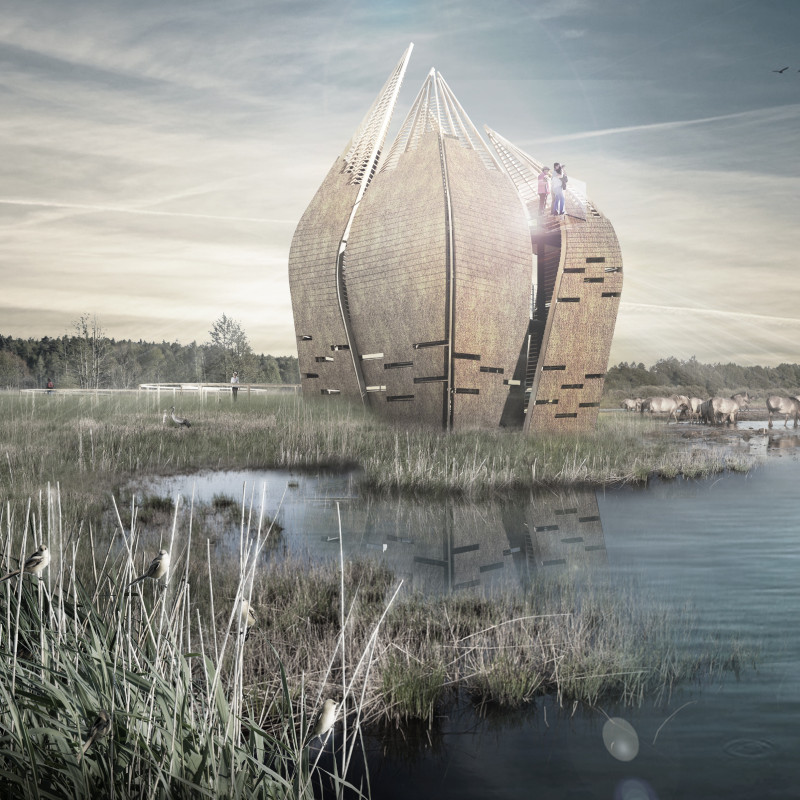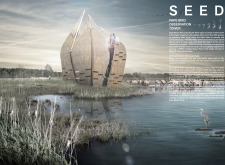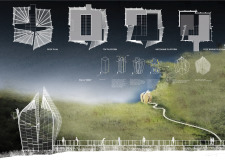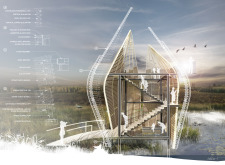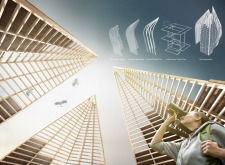5 key facts about this project
## Project Overview
The bird observation tower, named "SEED," is located in Pape Nature Park in southwestern Latvia, an area notable for its diverse migratory bird population, with over 200 species recorded. The design of the tower aims to enhance the birdwatching experience, allowing visitors to observe wildlife closely while maintaining a respectful distance from their natural habitats. This structure serves as a significant addition to the park, promoting environmental engagement and interaction.
## Architectural Form and User Experience
The tower's architectural composition consists of a modular design with petal-like sections that rise upwards, which not only creates a visually engaging silhouette but also facilitates optimal viewing for birdwatchers. The top platform, mezzanine level, and connecting footbridge offer multiple vantage points for exploring the wetlands. These various configurations encourage visitors to discover the surrounding environment, with an emphasis on exploration and unobtrusive interaction with nature.
### Material Selection and Sustainability
The project incorporates a thoughtful selection of materials that align with the ecological values of the park. Primary materials include straw bales for insulation, glulam timber for structural support, steel brackets for integrity, and glass composites to maximize natural light and provide clear views. This material palette not only emphasizes sustainability but also connects the structure visually and environmentally to its surroundings. By using local and carbon-neutral materials, the design minimizes ecological footprints while enhancing the overall aesthetic coherence of the tower with the natural landscape.


